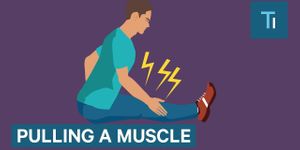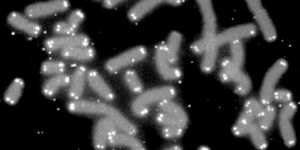Diagnosed: What Really Caused this Man's Popeye Biceps?
Many people associate bulging biceps with strength and vigor, but this can be far from the truth, as one Japanese man discovered.
Whereas bulging biceps found on bodybuilders come from months and years of physical training, the bulge on the 79-year-old Japanese patient happened nearly overnight. The man reportedly attempted to lift an object when he “felt a sudden sharp pain in his left shoulder.” When he showed up at the clinic two days later, doctors knew the cause even before testing.
The man had apparently torn the long head of the biceps tendon, which is attached at the shoulder. The result: Biceps that sag, especially when the elbow is flexed. This is because there’s now no tendon to keep the biceps pulled taut toward the shoulder.
"It is exactly the same as what I saw in the textbook," said Dr. Naoki Yoshida, an orthopedic surgeon at Shonan Kamakura General Hospital in Japan. "I knew without taking an MRI or X-ray."
The tear produces such a characteristic bulge on the arm that doctors have dubbed it the “Popeye” sign or the “Popeye” deformity. The name refers to the condition’s similarity to Popeye, the beloved cartoon character who bulks up after eating canned spinach.
"Magnetic resonance imaging (MRI) of the shoulder revealed a complete rupture of the long head of the biceps tendon," the team wrote in their report.
Of note, these injuries often occur in older adults, likely because the tendon is more “well-worn” in this population. "The proximal tendon is like a rope," said Dr. Elizabeth Matzkin, a spokeswoman for the American Academy of Orthopedic Surgeons, who was not involved with the case study. "Over time and with use, you can fray and wear down the rope."
But unlike Popeye’s muscular spinach-induced biceps, patients with this condition don’t have increased strength in the affected arm. "The affected part was actually soft and pillowy, not hard muscle like Popeye," said Dr. Yoshida.
Luckily, because the biceps are connected to the shoulder by two tendons, the arm still retains relatively normal strength, despite a rupture on one of the tendons. Surgery isn’t usually required and treatment typically includes the tried-and-true RICE regimen: Rest, Ice, Compression, Elevation. In the case of the Japanese patient, doctors prescribed him with nonsteroidal antiinflammatory drugs (ibuprofen or aspirin) to relieve pain. Four months after treatment, the man is reportedly recovering well with his Popeye’s arm.
Additional sources: CNN, Live Science









